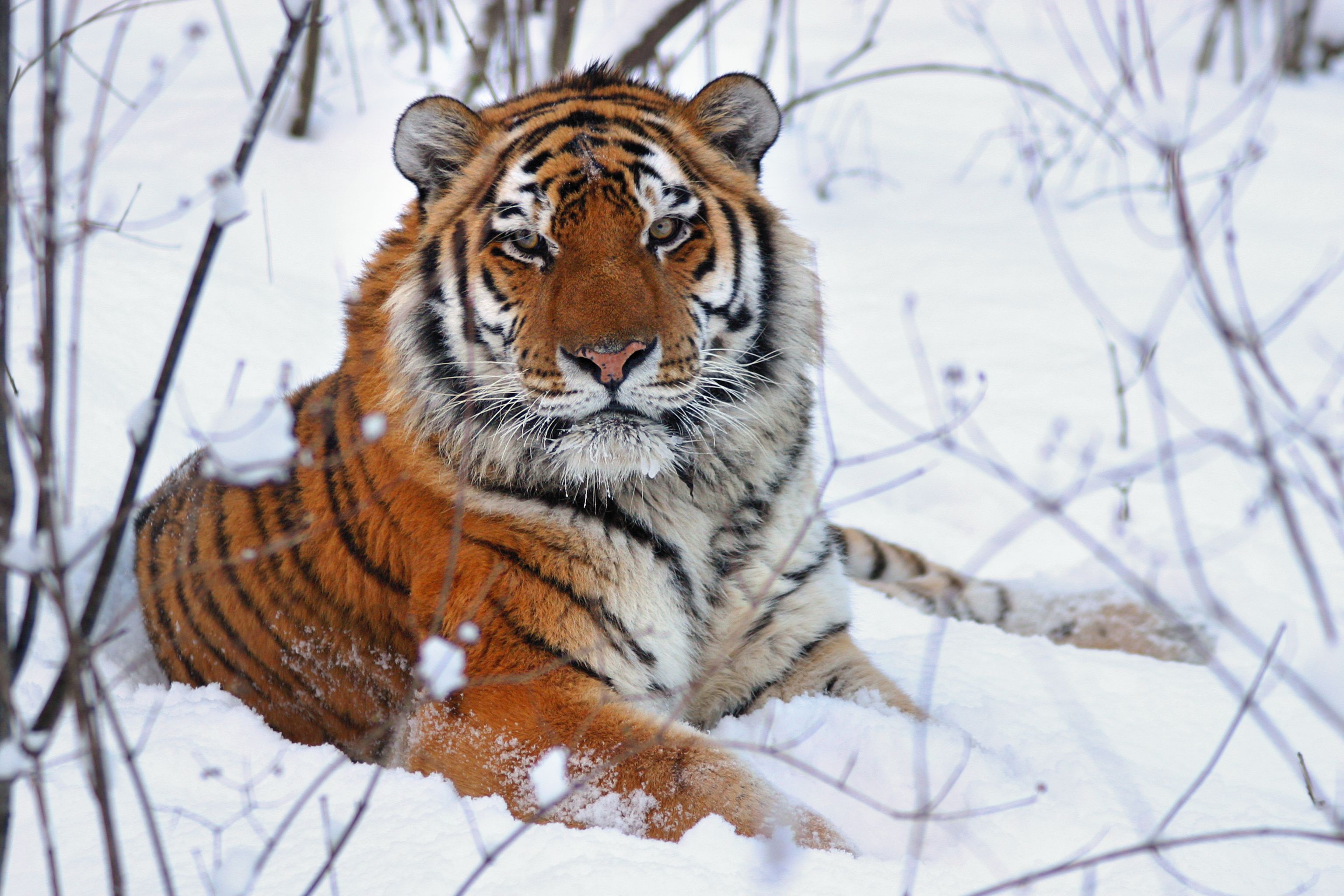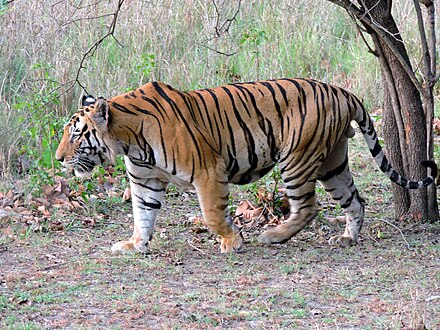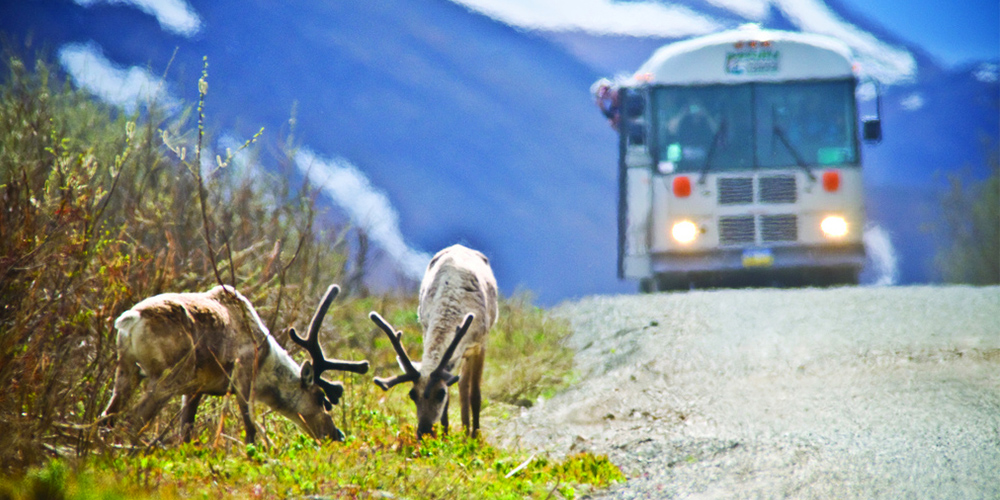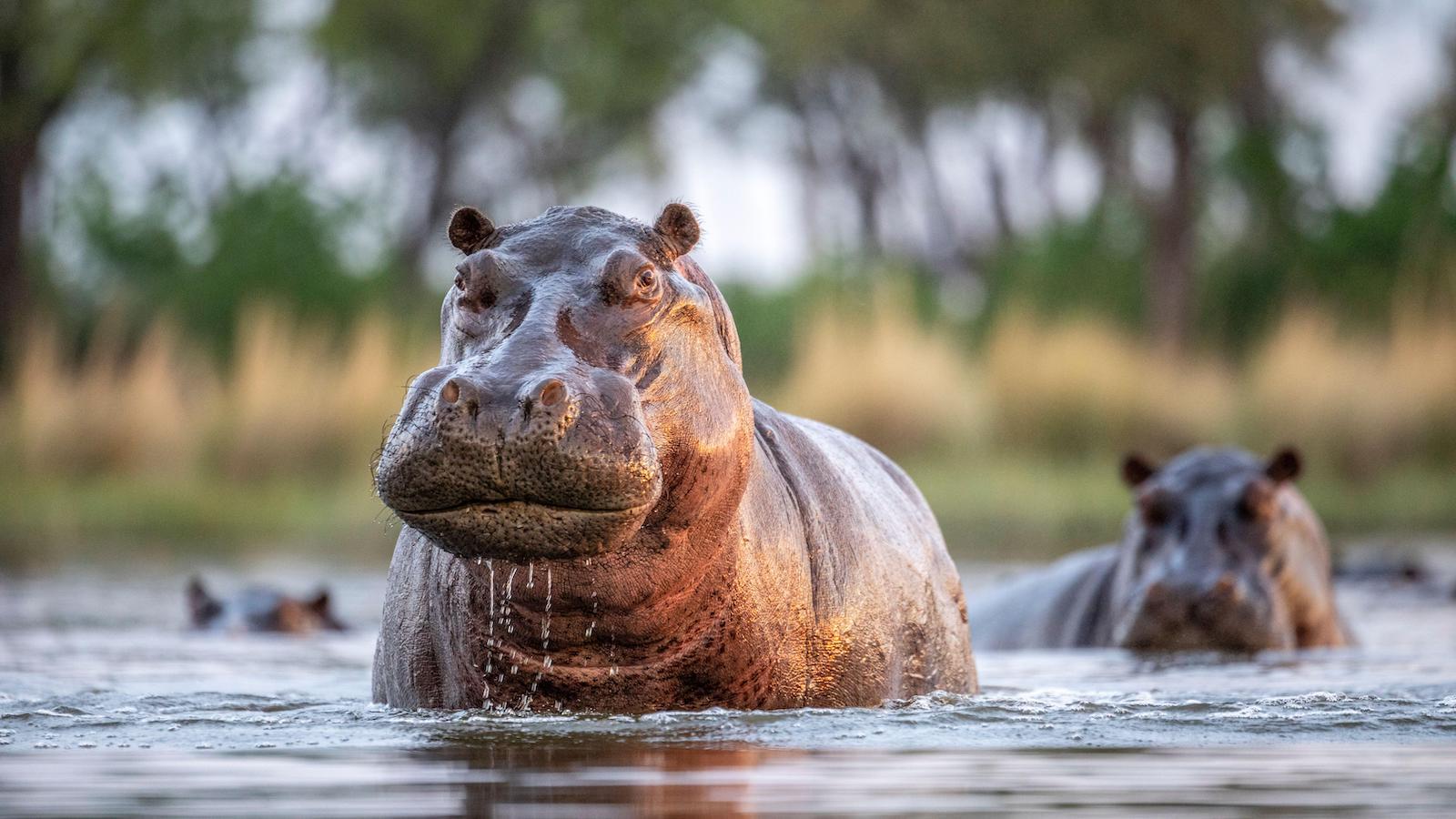Siberian tiger
Male Siberian tigers can weigh between 400 to 675 pounds (181 to 306 kilograms) and have a length of about 10.8 feet (3.3 meters) from head to tail.

Siberian tiger, (subspecies Panthera tigris altaica), subspecies of tiger (Pantheria tigris) inhabiting the cold-climate forests of the Primorye and Khabarovsk territories of far-eastern Russia as well as northeastern China. In appearance, the Siberian tiger is distinguished from other tiger subspecies (such as the similar-looking but hot-climate Bengal tiger) by its muted orange coat accented by black stripes, its thick fur, and its size; it is considered by many experts to be the world’s largest tiger (the Bengal tiger ranking second largest). Fewer than 600 Siberian tigers remain in the wild, while several hundred more are kept in zoos and nature parks worldwide.
The largest male Siberian tigers may grow up to 3.7 metres (12.1 feet) in body length (including a 1-metre- [3.3-foot-] long tail) and weigh up to 423 kg (about 933 pounds). Females are smaller, the largest measuring 2.4 metres (7.9 feet) long and weighing as much as 168 kg (370 pounds). The tiger is a solitary hunter that preys on wild boars (Sus scrofa), badgers, raccoon dogs (Nyctereutes procyonoides), various types of deer(especially sika [Cervus nippon]), and even small Asiatic black bears (Ursus thibetanus).
Related: Why do cats purr?
Bengal tigers
Bengal tigers are slightly smaller but still impressive, with males weighing around 400 pounds (181 kilograms) on average.

The Bengal tiger is a population of the Panthera tigris tigris subspecies and the nominate tiger subspecies. It ranks among the biggest wild cats alive today. It is considered to belong to the world's charismatic megafauna.
The tiger is estimated to have been present in the Indian subcontinent since the Late Pleistocene, for about 12,000 to 16,500 years. Today, it is threatened by poaching, loss and fragmentation of habitat, and was estimated at comprising fewer than 2,500 wild individuals by 2011. None of the Tiger Conservation Landscapes within its range is considered large enough to support an effective population of more than 250 adult individuals.
Related: Why do cats bring "gifts" like mice or birds?
The Bengal tiger's historical range covered the Indus River valley until the early 19th century, almost all of India, Pakistan, southern Nepal, Bangladesh, Bhutan, and southwestern China. Today, it inhabits India, Bangladesh, Nepal, Bhutan, and southwestern China. India's tiger population was estimated at 2,603–3,346 individuals by 2018. Around 300–500 individuals are estimated in Bangladesh, 355 in Nepal by 2022, and 90 individuals in Bhutan by 2015
It's important to note that individual variations can occur, and the sizes mentioned are general averages. Tigers are apex predators and are known for their strength, agility, and powerful build. They are also critically endangered, with conservation efforts underway to protect and preserve their populations in the wild.




















